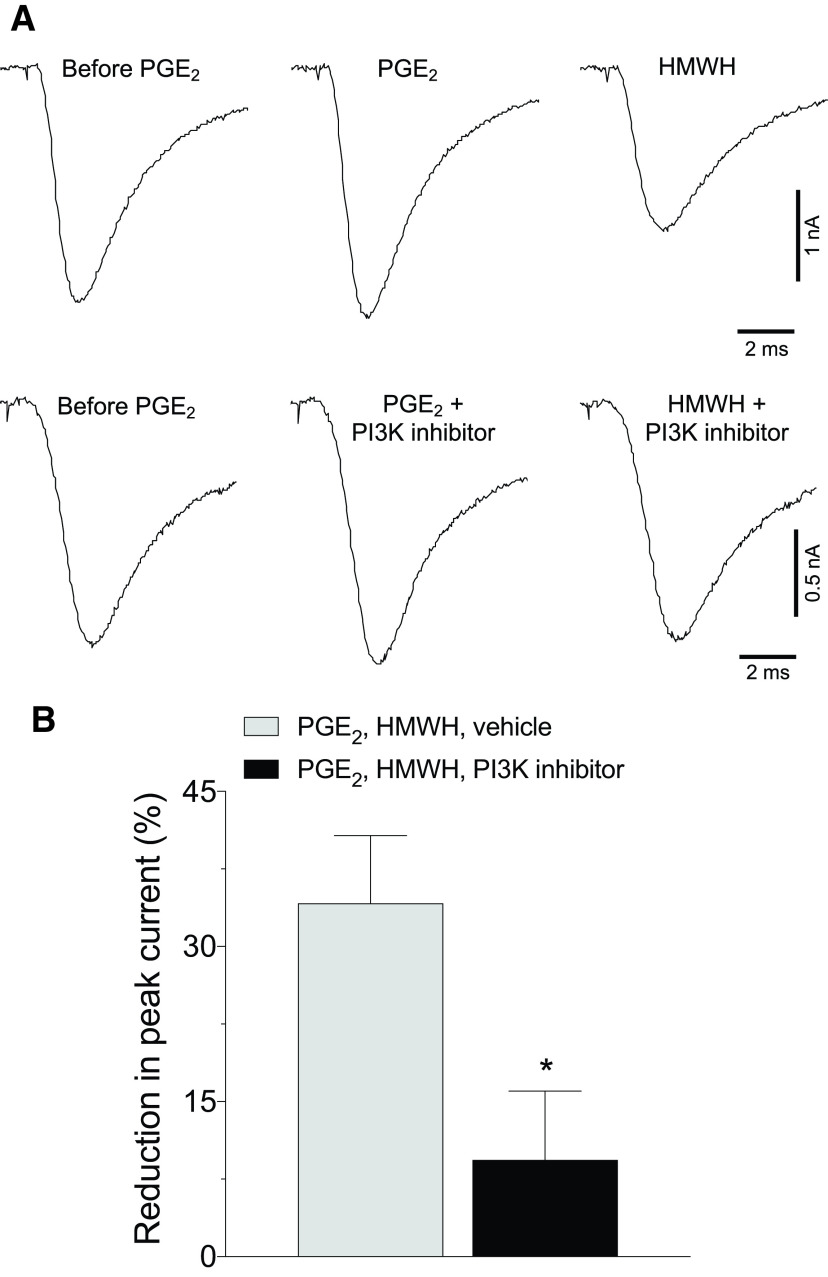Figure 7.
Inhibition of PI3K reverses attenuation of PGE2-sensitized TTX-R sodium current induced by HMWH. Small DRG neurons from male rats were held at −70 mV in voltage-clamp mode of whole-cell patch clamp. TTX-R sodium current was induced in the presence of TTX (100 nm) by voltage step to −10 mV after 2 s conditioning at −50 mV. A, Illustrative traces depicting TTX-R sodium current as follows(left to right): before administration of PGE2 (1 μm), 5 later, and 5 min after administration of HMWH (200 µg/ml) either alone (top) or with the addition of the PI3K inhibitor (LY249002, 50 μm; bottom). Note the substantial reduction in TTX-R sodium current induced by HMWH (top) and attenuation of this effect, when PI3K inhibitor was added (bottom). B, Pooled magnitudes of reduction in peak TTX-R sodium current 5 min after bath application of HMWH, relative to a baseline measured before this application (5 min after stimulation with 1 μm PGE2), in the absence (white bar) or presence (black bar) of PI3K inhibitor (LY249002, 50 μm). Inhibition of TTX-R sodium current by HMWH was attenuated by LY249002 (two-tailed unpaired Student's t test: t(10) = 2.7, *p = 0.024). n = 6 neurons/group.

